MASI Lugano – LAC venue is hosting the major exhibition Calder. Sculpting Time (until 6/10/2024, catalog Silvana Editoriale), the most comprehensive monographic exhibition dedicated to Alexander Calder by a Swiss public institution in the last fifty years.
Calder is an exceptional figure: a highly successful artist whose work brought movement to sculpture, a traditionally static art form. He also had a profound influence on design from the 1950s onwards: it is no coincidence that his work was exhibited at the 1958 Brussels World’s Fair alongside that of Harry Bertoia and Isamu Noguchi, both sculptor-designers. And even Charles and Ray Eames, with whom he was friends, had one of his sculptures in their poster house in Los Angeles.
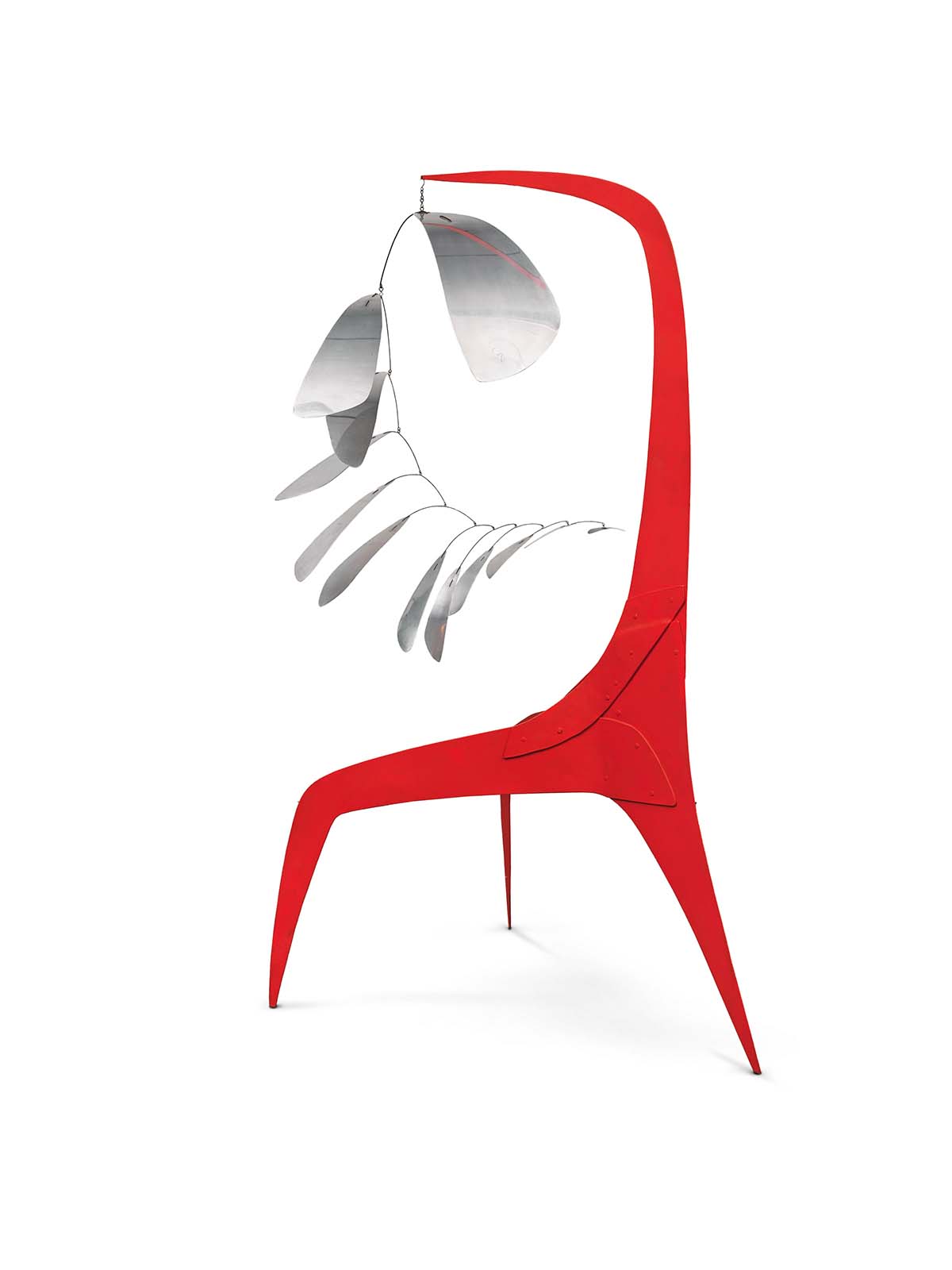
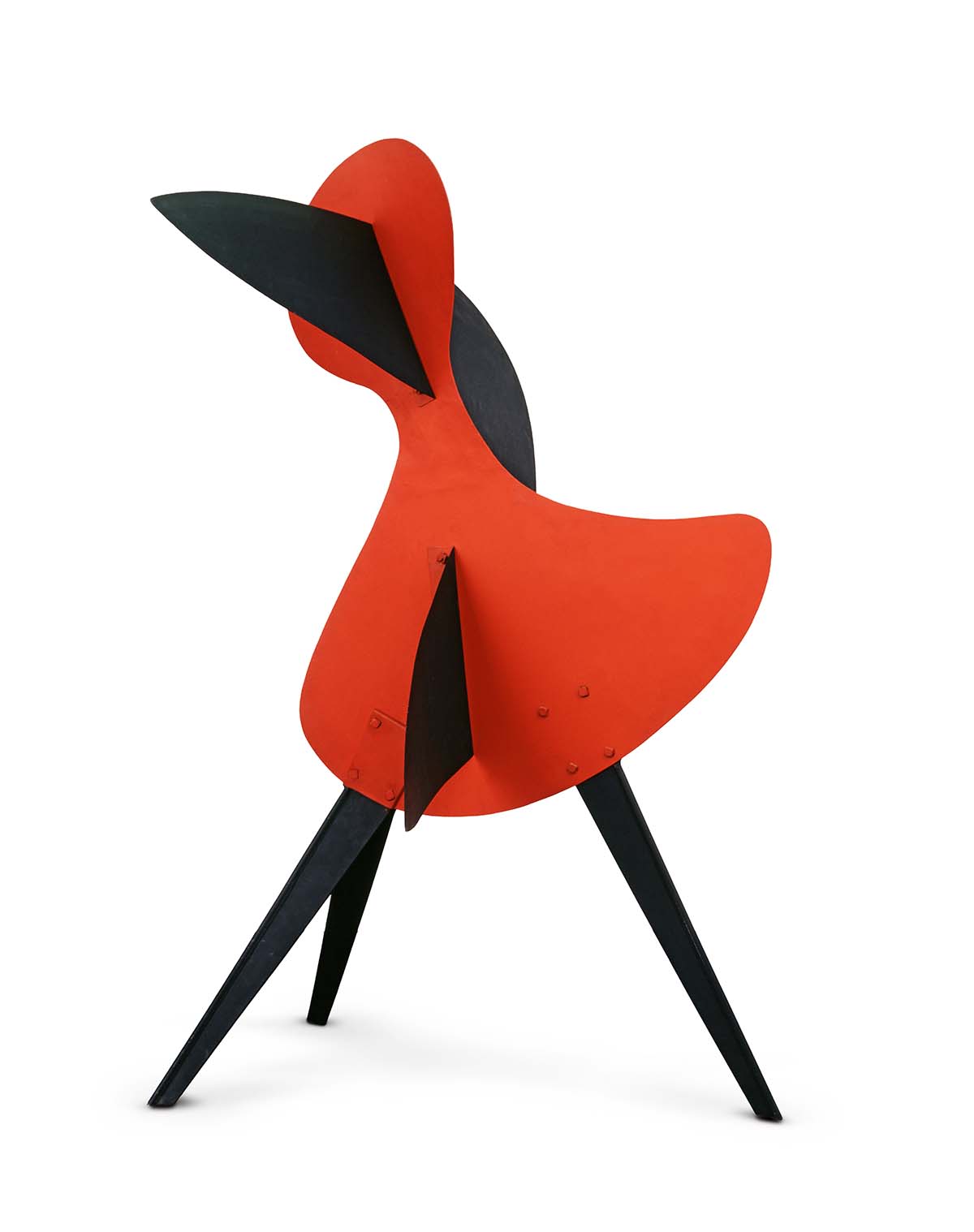
The exhibition brings together more than 30 works created, between 1931 and 1960, drawing from major international public and private collections, including the Calder Foundation in New York, from which a large body of work comes. Conceived as an open space without walls, Calder. Sculpting Time brings together works ranging from early abstractions or sphériques to a selection of more recent mobiles, stabiles, and standing mobiles of various sizes. Also on view is a selection of constellations, a term coined by Marcel Duchamp and James Johnson Sweeney for the artist’s 1943 wood and wire sculptures.
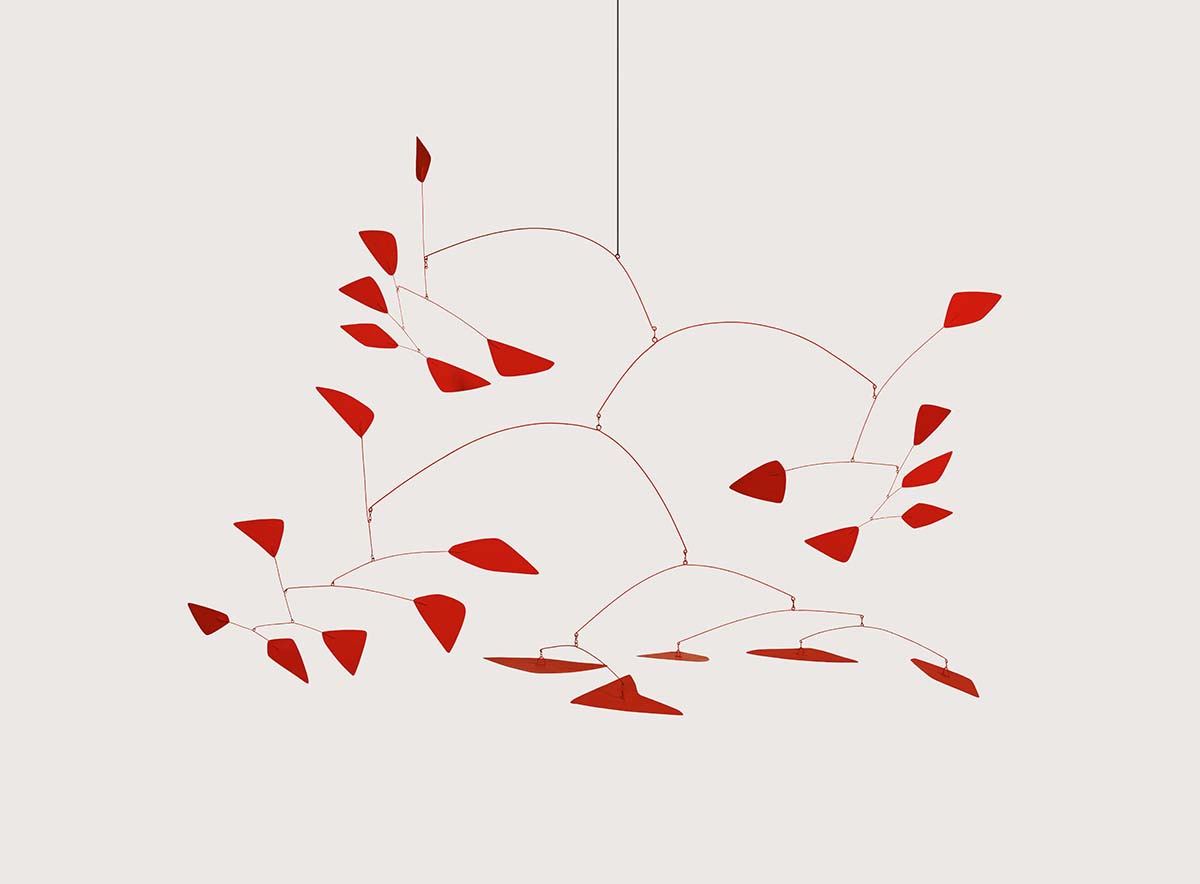
Fernand Léger wrote of his work, “It is something serious, although it does not give the impression of being so”. One of Calder’s most important innovations was to incorporate movement into his compositions. His mobiles, a term coined by Duchamp, are kinetic sculptures, constantly changing compositions. In the last room of the exhibition, in front of a large window that opens to the lake and the panorama, is the imposing Red Lily Pads mobile (1956), a work that responds to the slightest change in air and light, vibrating in the unpredictability of time and its different moments.
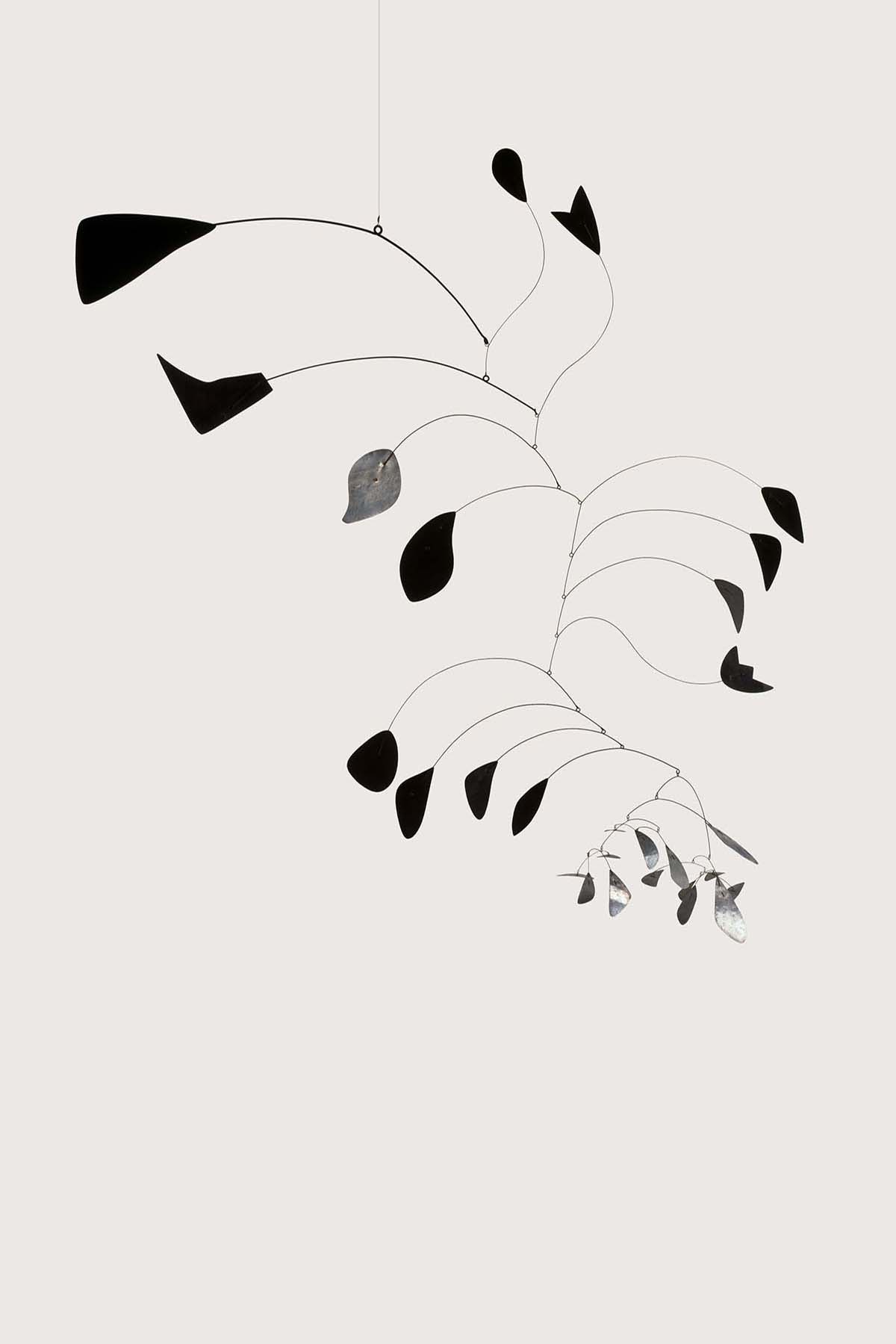
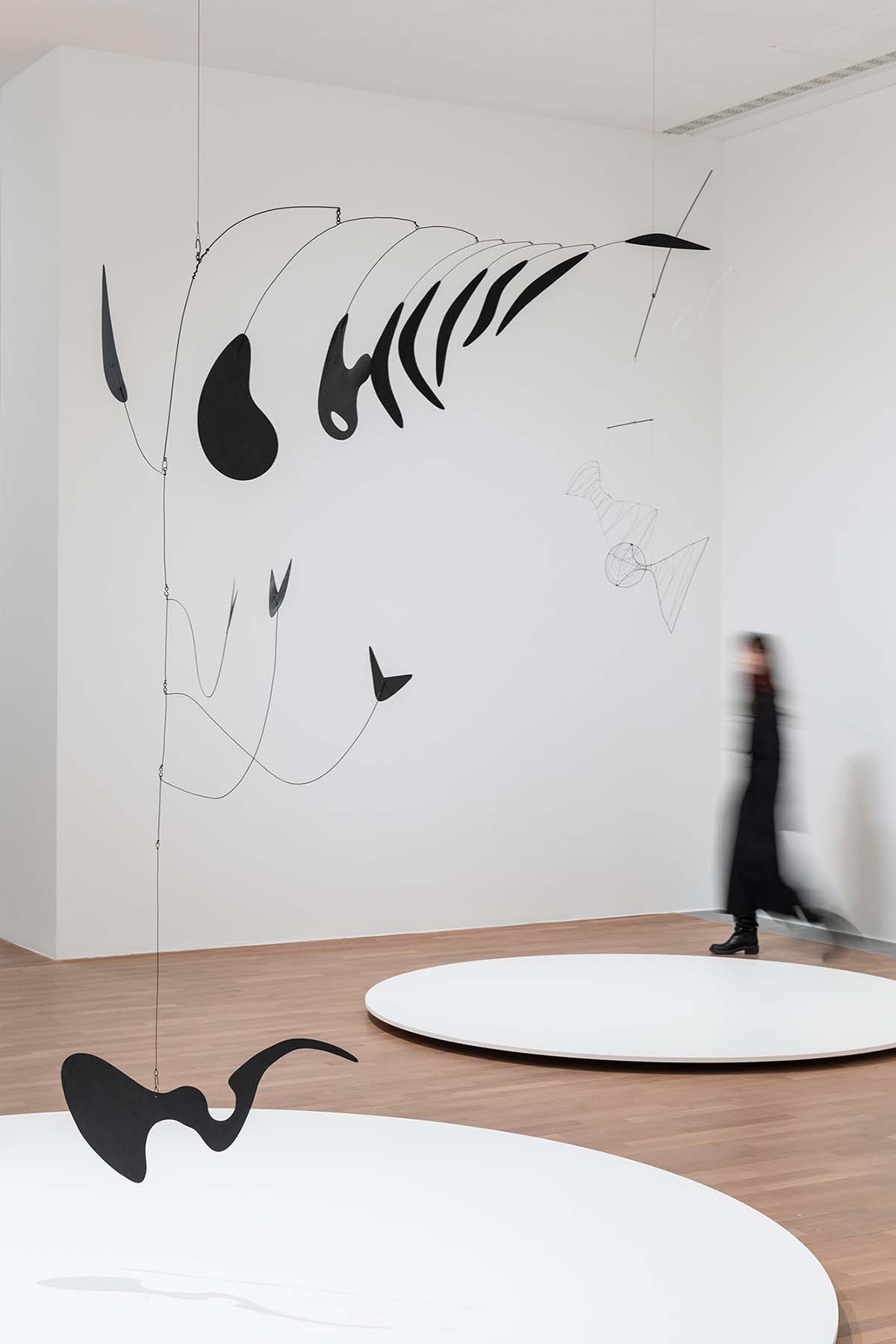
“Calder created metallic organisms that possess the qualities of lightness and diversity in subtle biomorphic forms that are at once resistant and fragile, dynamic and aesthetic, solid and hypersensitive,” explain Carmen Giménez and Ana Mingot Comenge, curators of the exhibition.
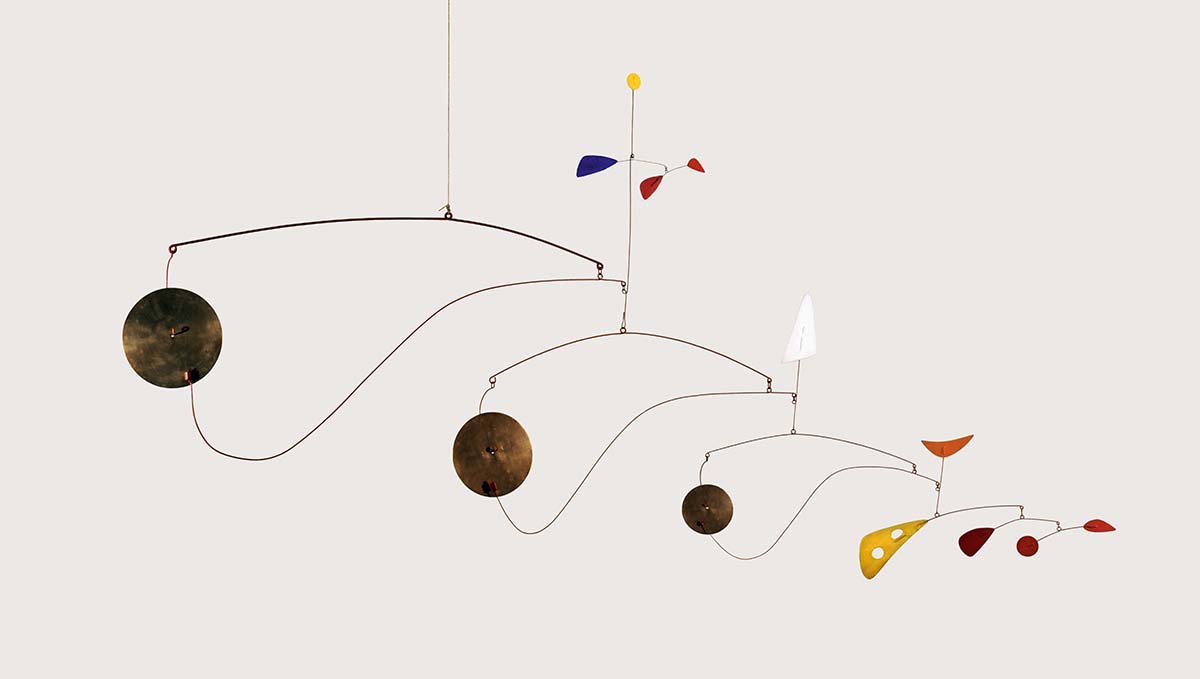
The history of the constellations is interesting and poetic: due to the shortage of sheet metal during World War II, Calder began a new series of abstract sculptures in wire and wood in 1943 that hung on the wall at unexpected heights.
Foto allestimento – Luca Meneghel © 2024 Calder Foundation, New York / Artists Rights Society (ARS), New York







